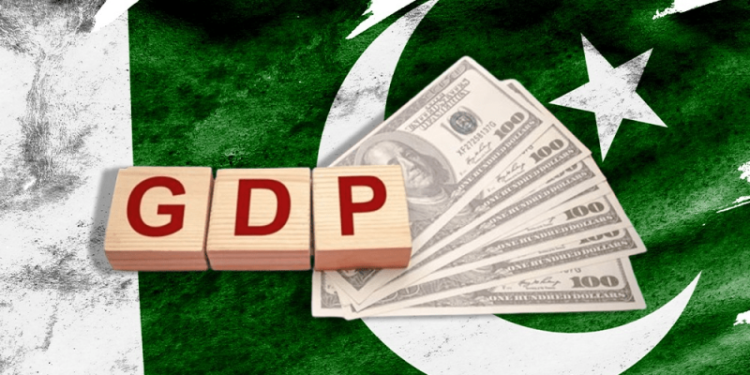Pakistan has posted a gross domestic product (GDP) growth of 1.73% in the second quarter (October-December) of fiscal year 2024-25, estimates released by the Pakistan Bureau of Statistics (PBS) on Tuesday showed.
This comes despite the contraction in industry (-0.18%) during the said period, read a press release issued by the PBS after the National Accounts Committee (NAC) meeting.
Meanwhile, agriculture and services posted a growth of 1.1% and 2.57%, respectively.
Further, the committee approved the updated growth of GDP during the first quarter of FY2023-24 at 1.34% as compared to 0.92% estimated previously.
The revision comes “due to upward revisions in services from 1.43% to 2.21% and improvement in the industrial sector from -1.03% to -0.66%”.
NAC shared that during Q2 of the ongoing fiscal year, crops have contracted by 5.38%.
“The contraction of 7.65% in important crops is due to reduction in production of cotton (-30.7% from 10.22 to 7.084 million bales), maize (-15.4% from 9.74 to 8.24 million tons), rice (-1.4% from 9.86 to 9.72 million tons), and sugarcane (-2.3% from 87.64 to 85.62 million tons).”
Meanwhile, the wheat crop “has shown a decline of 6.8% in area as compared to last year”.
“High base of 2023-24 has also resulted in decline in growth of important crops,” it said.
NAC said the rate of contraction in industry has slowed down from 1.81% in 2023-24Q2 to 0.18% in 2024-25Q2.
“Mining and quarrying industry has contracted by 3.29% due to low quarterly production of mining products. The LSM, driven by Quantum Index of Manufacturing (QIM), has declined by 2.86% due to negative contributions from sugar (-12.63%), cement (-1.82%), and iron & steel (-17.86%) during October-December,” it said.
Meanwhile, the services have grown by 2.57% as compared to 1.32% in Q2 last year.
NAC noted that the slowdown in CPI-based inflation has resulted in positive contributions in real value added of industries primarily compiled at current prices including “information and communication (8.45%), finance and insurance (10.21%), public administration & social security (9.10%), public sector education (4.80%) and health (6.60%)”.









